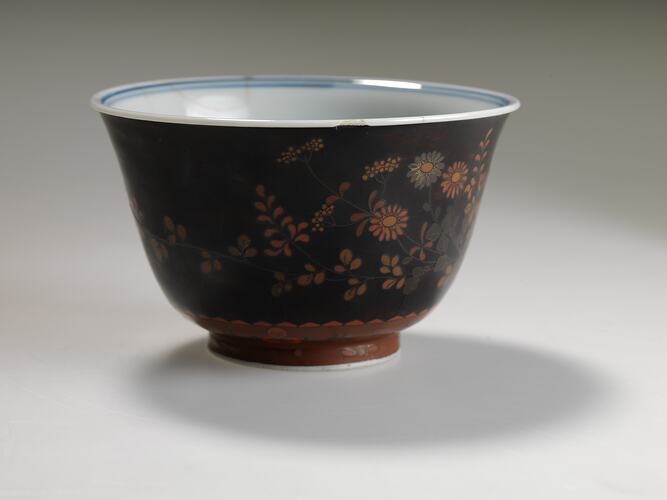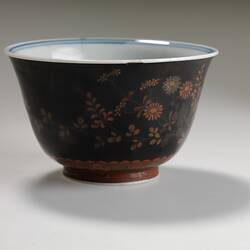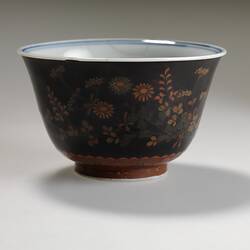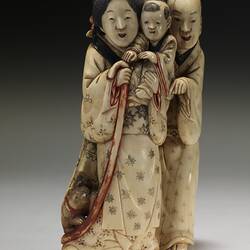Summary
Cloisonné and porcelain bowl manufactured in Seto, Japan in the early Meiji period (1868-1880). The porcelain bowl was made by Kato Yoroku, and the shippo enamelling by another identified artist.
The process of inlaid enamelling (cloisonné) in Japan dates back to the 8th century. Popular throughout Japan over the centuries, technical developments in the nineteenth century saw it reach its zenith during the Meiji period (1868-1912). The most important technical development being the 'Yuusen-shippo' method developed by Tsunekichi Kaji in 1833, in which fine filigree wires of brass, gold or silver are glued rather than soldered onto base metal.
Then in 1868 Tsukamoto Kaisuke developed a process of applying filigree wire and fired enamel to ceramic pottery, known as 'Jitai Shippo'. And in 1879, Namikawa Sosuke (1847 to 1910) developed a technique for creating totally wireless enamel ware, 'Musen-shippo'. The elimination of wire enabled the artisan to create elaborate scenic designs that were not possible with wire.
Physical Description
Deep bowl on shallow foot. White inside with double band of blue around rim. Exterior dark brown/ black cloisonné overlay of flowers and insects.
More Information
-
Collection Names
-
Collecting Areas
-
Acquisition Information
Cultural Gifts Donation from Dr Will Twycross, 23 Jan 2009
-
Acknowledgement
Donated through the Australian Government's Cultural Gifts Program
-
Manufacturer
-
Place & Date Exhibited
Royal Exhibition Building (REB), Melbourne, Greater Melbourne, Victoria, Australia, 1880-1881
-
Collector
Mr John Twycross, Elsternwick, Greater Melbourne, Victoria, Australia, 1880
-
Inscriptions
Signed in blue ink on base: Nihon Seto/ [KA]TO Yoroku Sei (Nihon Seto/ [KA]TO Yoroku Made) Although signed 'TO Yoroku', the signature appears to be missing the 'KA' which would give the correct signature of KATO Yoroku.
-
Classification
Royal exhibition building, International exhibitions, Exhibition heritage
-
Category
-
Discipline
-
Type of item
-
Overall Dimensions
125 mm (Width), 75 mm (Height)
-
Maximum dimensions
77 mm (Height), 120 mm (Outside Diameter)
Measurement From Conservation.
-
Keywords
Cloisonné Metalwork, Decorative Arts, Exhibitions: Melbourne International, 1880-1881, Japanese Art, Porcelain, Royal Exhibition Building, Royal Exhibition Building: History of Events, 1879-1899



